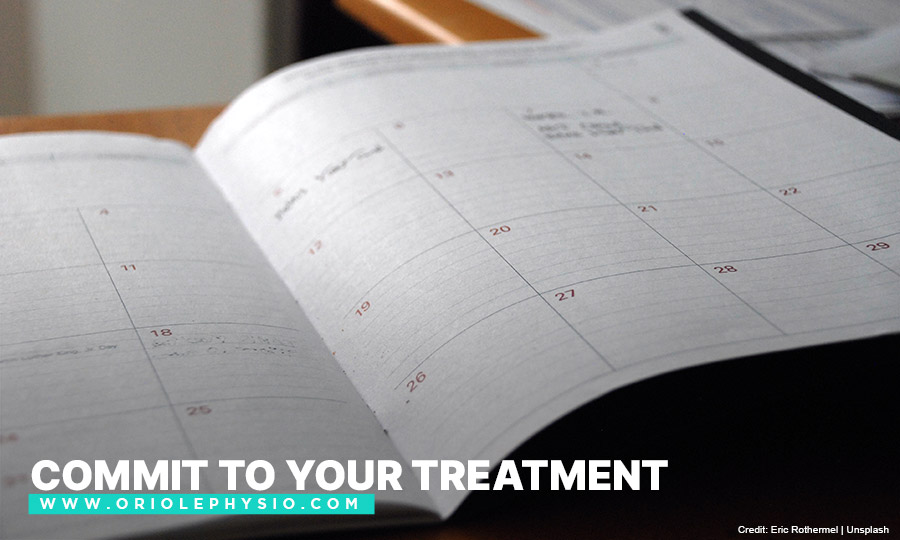How to Get the Most out of Your Physiotherapy Sessions
A physiotherapist can help alleviate pain and regain movement and functionality whether you’re recovering from an injury or dealing with a chronic condition. Regardless of your reasons for undergoing physiotherapy, you need to make the most out of your physiotherapy treatment to promote healing.
Maximize your time and energy during your physiotherapy sessions with the help of the following tips:
Preparation

By being well-prepared for your visit to the physiotherapy clinic, take note of the following so you and your physiotherapist can get the most out of your session:
- Make a list of your questions and concerns. There are various things you may not know about physiotherapy, including the pain your own body is experiencing. If Googling your symptoms makes you even more confused, asking your physiotherapist about your concerns will allow you to get a better understanding of your condition and what you need to do.
- Remember when and how your pain started. When it’s your first time at the physiotherapist, you will undergo a proper assessment and evaluation, and you will be asked a variety of questions. It helps to keep track, or at least be able to pinpoint the first time the pain emerged and what you were doing around that time.
- Dress for the occasion. You have to treat your physiotherapy sessions like a workout session at the gym since they can involve similar activities. Expect your sessions to include stretching and bending, so it’s best to wear something you’re completely comfortable in. Loose, breathable clothing also gives your physiotherapist better access to affected areas. Running or walking shoes will help minimize the chances of exercise-related injuries.
- Come on time. If you want to maximize the hours appropriated for your session, you can’t take the risk of tardiness. Being 5 minutes late means you lost 5 minutes of progress. While the disparity is relatively small, imagine how much more you could have done if you came in early. The advantages of physiotherapy become evident when your body consistently does what it needs to do to heal at the time it has been accustomed to moving. Habitual tardiness pulls you further away from that consistency.
- Prepare mentally. It’s been said that exercise helps you maintain good mental health. Conversely, mentally preparing for physical activity also benefits your body. Before going into a session, you must at least maintain a state of calmness and readiness, so you can focus on putting all your energies into getting the right physical treatment for your body pain. It also helps you become a more cooperative patient to your physiotherapist.
Communication

Communication is a vital part of life and is doubly so in terms of treatment. Better communication allows better collaboration for you and your physiotherapist so you can work your way towards healing faster and more effectively.
- Tell your physiotherapist everything. Describe the pain you’re experiencing in as much detail as possible. Tell them which parts of your body are most affected, and what happens to you when you attempt to move them. With a full description of your symptoms, your physiotherapist will be able to diagnose the problem correctly. This helps them control the intensity of your activities per session, lessening the possibility of body sores afterwards.
- Listen to your therapist. With your diagnosis, your physiotherapist will be able to break down the goals of your therapy, including the frequency, duration, and type of your treatment. The better you understand your diagnosis, the firmer grasp you have on managing your treatment. Most treatment plans include home exercises that you can perform alone, outside of the physiotherapy clinic. Paying attention to what your therapist says saves you time. This way, you don’t have to call them repeatedly to ask questions they have already answered during the consultation.
- Communication is a two-way street. You and your therapist must agree on the best course of action for your treatment. Setting recovery goals requires you, as the patient, to be vocal about what you think are the limits of your body. Because you know your body well, you will be able to determine to what extent you can manage the exercises under your treatment plan. If it hurts, tell them.
- Organized problems mean organized solutions. If you come in with more than one problem, report them one at a time in as organized a manner as possible. Don’t bombard your physiotherapist with a whole slew of information. Also, consider the possibility that a pre-approval from your insurance provider might be needed before you can proceed with the treatment, so allow your physiotherapist to schedule a separate session for evaluation.
- Give updates. Keep your communication lines open. Monitor your progress, and jot down details. This will allow you to provide your therapist with a clearer picture of what has happened since your last session, and what went on during your home exercises.
Safety

Physiotherapy requires you to do physical activities, some more demanding than others. To avoid hurting yourself any further, you must observe safety measures whether you’re at the physiotherapy clinic or at home.
- Pace your exercises. One advantage of physiotherapy is that you can manage the intensity of your exercises. Don’t push yourself too hard. Your endurance and stamina differ from session to session, and you can always ask your therapist for a quick break if you’re more tired than usual. Every physiotherapy experience is unique. Do not compare your progress to somebody else’s. Focus on what you’ve done so far and how much your symptoms have subsided since your first session.
- Clean your clutter. Make your exercise space at home conducive to the movements required in your routine. This helps your focus on performing the exercises correctly without the threat of stubbing your toe against the edge of a coffee table or knocking over a chair.
- Take the time to reflect. Why did you seek physiotherapy treatment? Consider taking care of yourself in the long term, and the possibility that there will be physical activities you used to enjoy regularly that you no longer can in the future.
Commitment

The success of physiotherapy treatments relies heavily on consistency. When you have set a treatment plan with your physiotherapist, your body will benefit greatly from if you:
- Stick to the routine. It takes a lot of work before you get to your goal, but you need to train your body to endure the movements that constantly cause the symptoms in the first place. Your progress will be slower, and even harder to track, if you don’t do what your therapist and your treatment plan say.
- Never skip. Is it becoming more painful? This might be a sign that the treatment isn’t working for you, and you need an alternative exercise or another treatment plan. Don’t quit right away. Tell your therapist immediately so you can address the issue without going back to square one.
- Keep up the good work. Listen to what your therapist recommends after your treatment concludes. They may suggest exercises and regular activities that can prevent the recurrence of an injury or the reemergence of pain. Cooperate with your therapist, and be more involved with your recovery. Remember, it takes two to tango.

Our therapists at Oriole Physiotherapy & Rehabilitation Centre make sure that you get the care that you deserve. We provide private rooms and personalized service because we value your time at our clinic. Email [email protected] to book an appointment now.

